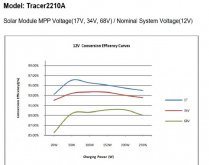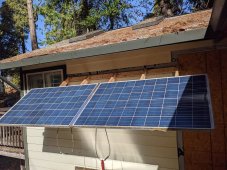Victron Energy has a short video on why their SCC don't start charging until the panel voltage is 5V > battery voltage. The presenter also explains why series wired panels are better than parallel wired panels from an energy harvesting standpoint.
In a different video he mentioned that the common advice to use parallel panels for better performance with shaded panels is incorrect. Bypass diodes in the panels mean that while a shaded panel doesn't add as much power as unshaded panels, they don't block other series connected panels from powering the system.
Has anybody experimented with shading parallel and series wired panels to see if this last statement is true?
In a different video he mentioned that the common advice to use parallel panels for better performance with shaded panels is incorrect. Bypass diodes in the panels mean that while a shaded panel doesn't add as much power as unshaded panels, they don't block other series connected panels from powering the system.
Has anybody experimented with shading parallel and series wired panels to see if this last statement is true?




